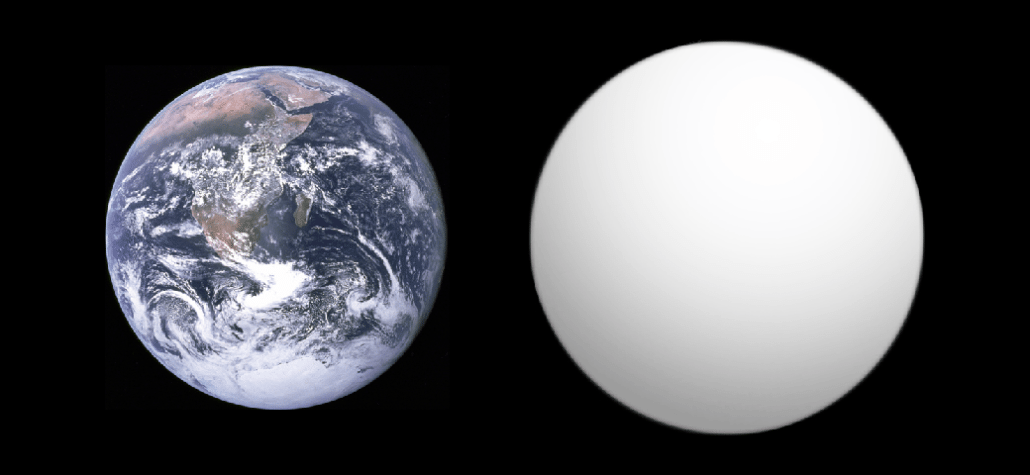We’ve found thousands of exoplanets in recent years, but the holy grail of planet hunting is to find a truly Earth-like world. A planet similar in size to Earth, with a rich atmosphere and a surface temperature capable of sustaining liquid water.
We tend to imagine such a world as looking very like Earth, with a bright yellow Sun and a nitrogen-rich atmosphere. But as we’ve discovered more exoplanets, we’ve learned that it is far more likely for a planet to orbit a small, red-dwarf star. Red dwarfs make up 75% of the stars in our galaxy, and most of them have planets and even planetary systems. In order for such worlds to be potentially habitable, planets of red dwarfs must be very close to their star. Much closer than Earth is to the Sun. But red dwarfs are known to have periods of violent solar flares and x-ray emissions, and this could strip close planets of any atmosphere, particularly for worlds the size of Earth or smaller. But new observations of the exoplanet GJ 1132b find that Earth-sized worlds can maintain an atmosphere, even when they are close to their red dwarf sun.
GJ 1132b is a “super-Earth” about 30% larger than Earth and about 60% more massive. This means it is likely a rocky planet like Earth rather than a small gas planet like Neptune. It is in close orbit with its red dwarf star, making a round trip in only 1.6 days. This means it is far too hot to be potentially habitable. The planet gets 16 times more light energy than Earth, so its surface temperature is likely similar to that of Venus. But given its similar size to Earth and the extreme closeness to its star, GJ 1132b is an excellent test of whether Earth-sized planets can maintain an atmosphere.
GJ 1132b can’t be observed directly. It was discovered by the transit method, where the apparent brightness of a star is seen to decrease slightly as a planet passes in front of the star. The larger the dip in brightness, the larger the planet. After GJ 1132b was confirmed as an exoplanet in 2015, a team of astronomers began to observe its transits at various wavelengths, from the visible into the infrared. They found that at one particular infrared range (the Z-band) the planet blocked more of its star’s light than at other wavelengths. In other words, at Z-band wavelengths, the planet appeared to be lightly larger. If the planet lacked an atmosphere, then we would expect the planet to block the same amount of light at all wavelengths, giving it the same apparent size. But if it has an atmosphere, the atmosphere would block light only at certain wavelengths such as infrared, just as our own atmosphere does. Given the size of GJ 1132b and the particular wavelengths its atmosphere blocks, it is likely a thick atmosphere rich in water vapor and methane.
This is an exciting discovery. We’ve discovered atmospheres around a super-Earth before, but never one so close in mass to Earth, and never one so close to its star. This discovery demonstrates that at least some red dwarf planets can maintain a rich atmosphere, and that would be true of potentially habitable planets that are a bit further from the star. We haven’t found the holy grail of exoplanets yet, but we now know such a planet is possible.
Paper: John Southworth, et al. Detection of the atmosphere of the 1.6 Earth mass exoplanet GJ 1132b. arXiv:1612.02425 [astro-ph.EP] (2017)












